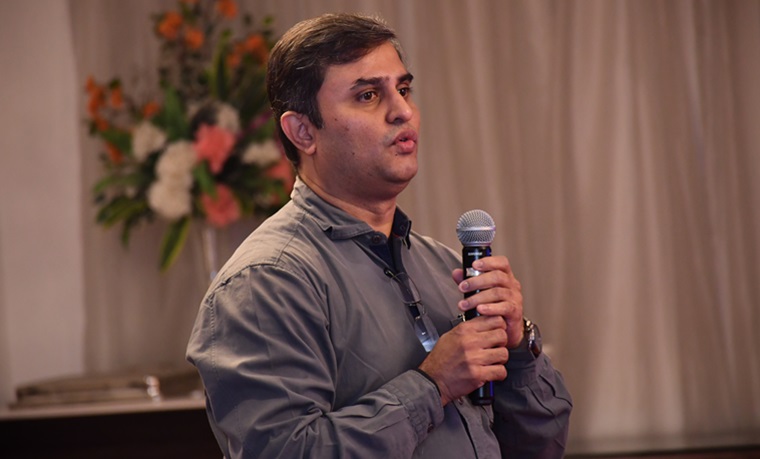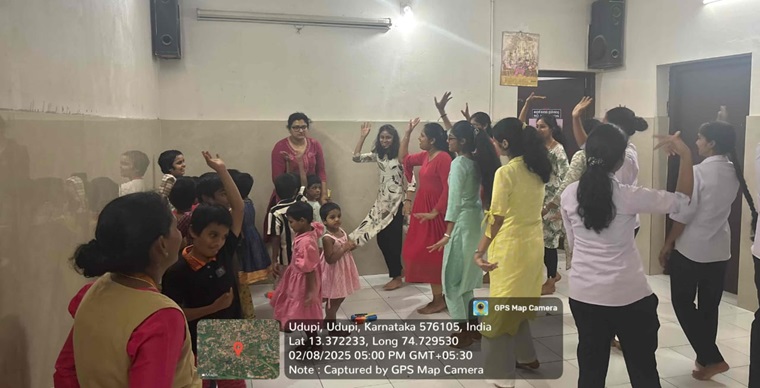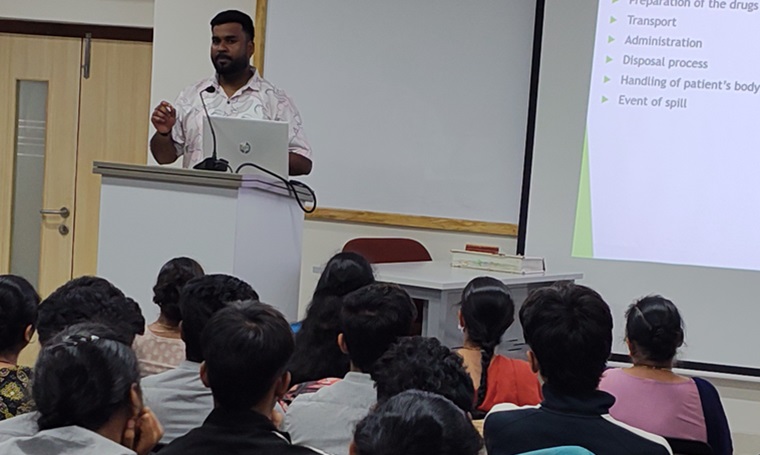Department of Medical Surgical Nursing, Manipal College of Nursing, Manipal Academy of Higher Education (MAHE), Manipal in collaboration with Dept. of Critical Care Medicine, Kasturba Hospital (KH), Manipal organized a Webinar on “CPR in COVID 19 special situations” on 22.05.2020 between 10.30 am and 12.30 pm A total of 150 participants from India and abroad joined the webinar.
As part of this Dr Daisy J Lobo, Associate Professor, Department of Medical Surgical Nursing Manipal College of Nursing, MAHE, Manipal and Dr Vishal Shanbag, Assistant Professor, Department of Critical Care Medicine KH Manipal delivered sessions. Dr Daisy emphasized on updates in Adult CPR and BLS and ACLS algorithm for COVID-19 patients, need for self-protection in caring COVID -19 along with effective CPR for the patients. General principles to be followed in resuscitating suspected/confirmed COVID-19 patients specially in the use of oxygen delivery systems, oxygenation, ventilation, futility assessment for DNAR (do-not attempt resuscitation), code blue with minimum team members, protected code blue top five key messages, code equipment and need for keeping the code equipment in hand, code management including the responsibilities of code team, GAP escalation to invasive ventilation (Gas exchange abnormality, Airway protection, pulmonary toilet), and the need for following appropriate steps in donning and doffing the PPEs were the topics highlighted by her.
Dr Vishal’s session was focused on caring COVID-19 patients in intubation, post intubation, CPR in intubated patients and intubation in special cases such as prone position ventilation, pregnant COVID-19 mothers. He emphasized on assigning the roles in the code team before entering into the patient care area to minimize the transfer of infection. Having the code help team and their role in reducing the spread of infection was highlighted. Few strategies to limit the generation of aerosols such as compression only CPR, covering the patients face with mask, staying six feet away while intubation till the cuff is inflated (other than the person intubating), avoiding BVM,
rapid sequence ventilation were explained by him. Situations where terminating resuscitative efforts were illustrated. Post resuscitation care in terms of shifting the patient following certain special precautions, keeping ready the ICU equipment in hand, handling ET tube to limit the spread of aerosols, cleaning and disinfecting all the equipment surfaces used, following strict doffing procedures, care in prone position ventilation were highlighted in his session.
At the end of the session, opportunity was provided for the participants to clarify their queries. Queries raised by the participants were mainly related to handling CPR in community setting and were clarified by the speakers.




